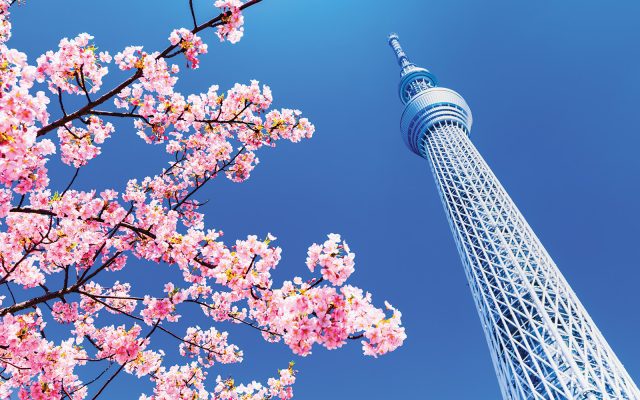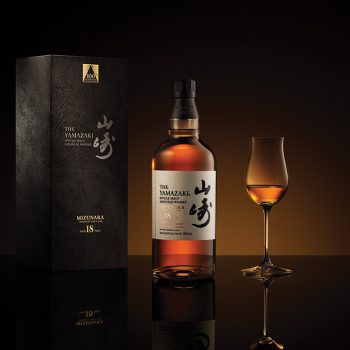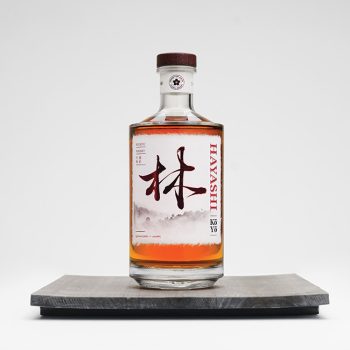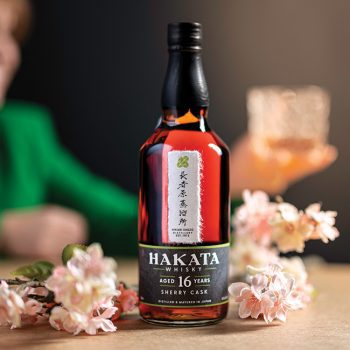The Japanese whisky category blossoms
Japanese whisky is popular around the world, and is often hard to come by. We take a look at the future of the sector in the country.

*This feature was originally published in the October 2023 issue of The Spirits Business magazine.
If 2023 has been a landmark year for Japanese whisky, 2024 could be more important still. As leading player Suntory prepares to wind down its centenary celebrations – marking 100 years since founder Shinjiro Torii pioneered whisky production in the country – many people are already contemplating a couple of significant events in a few months’ time.
In April, new whisky regulations from the Japanese Spirits & Liqueurs Makers Association will be implemented, in a move supported by many players in the industry – but not all (see below). The ratification is viewed by its supporters as a crucial development for a category that continues to grow, in terms of sales and reputation, around the world.
Before that happens, in February 2024, the newly opened Komoro Distillery in Nagano Prefecture will become the first Japanese host of the World Whisky Forum (and you can bet there will be no shortage of local topics for the attendees to debate).
If Japan’s historically loose and labyrinthine rules (or the lack of them) about whisky making are a huge source of potential confusion for consumers and trade alike, much the same can be said about Karuizawa, a legendary name in Japanese whisky circles, with a ‘ghost’ distillery status to rival the likes of Port Ellen in Scotch. Karuizawa’s original distillery closed in 2000, but the newly opened Komoro plant has been constructed by Karuizawa Distillers Inc (KDI). However, the company does not have the rights to the Karuizawa brand name – that belongs to Karuizawa Whisky Company, which has also recently opened its own distillery, in the town of Karuizawa itself. Still with me?
Beyond the confusion, it’s clear that Japanese whisky – despite suffering years of frustrating stock shortages and product withdrawals – retains an enviable cachet in markets around the world.
“Global appreciation for Japanese culture and craftsmanship is on the rise,” says Jon Potter, managing director of the House of Suntory. “This has certainly been reflected in the continued increase in demand for our Japanese whisky portfolio.”
The US and Greater China are the hotspots being targeted by many brand owners. “The greatest opportunity for Japanese whisky is the North American and Asian markets,” says Koji Shimaoka, CEO of KDI. “We believe there will be huge potential for Japanese growth in the next five to 10 years.”
There’s a similar focus at Marussia Beverages, with its portfolio of Hatozaki whiskies. “In the US, we have achieved a market share of circa 5% already,” reports Marc Torterat, the company’s marketing director. “We are anticipating the same growth over the next five years, and this means our current production capacity will be soon met. Last May, we decided to invest into a second site to raise our capabilities.”
Balancing supply and demand is a perennial concern for Japanese whisky, and it leads many companies to prioritise certain markets above others. “We are focusing our resources on the US, France, and a few other European markets where the category is dynamic, and where we have our own distribution companies,” says Torterat. “Not to forget our domestic market, Japan, where we will soon strengthen our sales structure.”
 In this context, increased production is key – not just new distilleries, such as Komoro and the ‘new’ Karuizawa, but also expansion at existing sites. This is true of Suntory’s Yamazaki and Hakushu plants, which have recently attracted a combined investment of JPY10 billion (US$77 million).
In this context, increased production is key – not just new distilleries, such as Komoro and the ‘new’ Karuizawa, but also expansion at existing sites. This is true of Suntory’s Yamazaki and Hakushu plants, which have recently attracted a combined investment of JPY10 billion (US$77 million).
After closing for renovations, both are expected to reopen shortly, says Potter, who adds that the work has a dual purpose: refining production and improving visitor facilities. At Yamazaki, an electrically heated pot still is being installed alongside the existing direct-fired pot, while Hakushu is introducing “a contemporary process for yeast cultivation”. Both distilleries are also incorporating floor malting.
Suntory has also marked 100 years with commemorative product launches. In May, limited editions of Yamazaki 18 Year Old Mizunara and Hakushu 18 Year Old Peated Malt were unveiled, alongside celebratory packaging for its flagship 12-year-old expressions, Yamazaki and Hakushu.
In September, the company announced a special release of luxury blend Hibiki 21 Year Old – with Japanese mizunara oak to the fore – and a new bottle design for Hibiki Harmony that showcases the traditional Japanese art of setsu gekka, meaning ‘snow, moon, flowers’.
Marussia has taken another path in terms of incorporating Japanese culture into a new release, launching Hatozaki 12 Years Umeshu Cask Finish – a combination of “premium single malts” aged for at least 12 years in American oak before being married then finished in barrels previously used for Japanese umeshu plum liqueur. “In general, our whiskies are delicate and mellow,” says Torterat. “Our master distiller and blender, Kimio Yonezawa, has developed a twofold blending process, and always adds a finish or ageing in bespoke barrels: sakura cherry wood for our Finest Blended, or Japanese mizunara white oak for our Pure Malt.”
Local techniques are also vital to the emergence of another Japanese ‘whisky’ style – that incorporates koji – aka aspergillus oryzae, the fungus used to saccharify rice for saké brewing. While ‘koji whisky’ cannot be labelled as whisky in Japan itself, it has found a home in the US, where historical precedent allows it to use the ‘whisky’ name.
Impressive scores
The debate over regulation and denomination will no doubt continue, but Chris Uhde, vice-president of ImpEx Beverages, which imports Hakata into the US, points to some impressive scores from US reviewers. These include 96 points for Hakata 16 Years Old from Whisky Advocate, which Uhde says has only been achieved by seven other whiskies over the past decade.
“Currently, we only have just under 1,000 casks [of Hakata] available,” Uhde says. “Given the great reviews and incredible scores we’ve been getting, we do not expect them to last long. We’ve decided to restrict which markets we will launch in so we can slow the sale of inventory. There are plans to fill more, but, truthfully, space is the issue.”
Hakata’s current range includes 10-, 12-, 16- and 18-year-old expressions, priced at US$80-US$190 per bottle, and all produced at the Hikari Distillery at Fukuoka, on the southern island of Kyushu.
 Hayashi is another ‘koji whisky’ – produced not from barley (as is the case with Hakata), but from long-grain indica rice, at the company’s distillery in the island of Okinawa. Bottlings include: Hayashi Koyo Ryuku and an eight-year-old, with enough stock for the next few years; Hayashi 24-year-old, with limited stocks; and soon-to-be-launched Hayashi 18-year-old, again with restricted quantities.
Hayashi is another ‘koji whisky’ – produced not from barley (as is the case with Hakata), but from long-grain indica rice, at the company’s distillery in the island of Okinawa. Bottlings include: Hayashi Koyo Ryuku and an eight-year-old, with enough stock for the next few years; Hayashi 24-year-old, with limited stocks; and soon-to-be-launched Hayashi 18-year-old, again with restricted quantities.
Focus on the US
Once more, the US is the focus, says Hayashi brand ambassador Yuki Matsuoka. “There are still plenty of growth opportunities for Japanese whiskies in the US market, as quality, high-end drinks continue to be produced,” she says. “Hayashi whisky is unique in that it is rooted in the Okinawan culture and environment,” she adds.
They may disagree about what should or should not be allowed in terms of production regulations, but all Japanese whisky makers are united in their belief in the future potential of the category. “
It’s already one of the fastest-growing categories outside of Japan, with sales more than doubling over the past five years,” points out Suntory’s Potter.
“We expect to see more growth in other markets as culturally curious consumers become invested in the rich history, craftsmanship and luxury that Japanese whisky represents.”
When is a whisky not a whisky?
The debate about authenticity in Japanese whisky has been raging for years – and there are signs that the move to ratify new regulations next April will not signal an end to the arguments.
For Jon Potter, managing director of the House of Suntory, the implementation comes “at a critical time” for the category. “We are very clear about our whisky portfolio, and clearly identify what is Japanese whisky and what isn’t,” he says. “Raising awareness and educating consumers about the unique qualities and production methods of Japanese whisky is crucial.”
Marussia marketing director Marc Torterat, however, wonders how significant this issue is in the world at large. “Last year, Hatozaki exhibited at Whisky Live Paris, the largest whisky fair in Europe, and neither the professionals nor the consumers/connoisseurs asked much about the matter,” he says.
 Those who pursue ‘alternative’ methods, such as Hayashi (using long-grain rice and koji) and Hakata (barley and koji), point out that such techniques have a long history in Japan (even though their products cannot be called ‘whisky’ in the home market). “There is no issue of legitimacy for Hayashi, which incorporates traditional Japanese methods that have been used for hundreds of years in our production process,” says Hayashi brand ambassador Yuki Matsuoka.
Those who pursue ‘alternative’ methods, such as Hayashi (using long-grain rice and koji) and Hakata (barley and koji), point out that such techniques have a long history in Japan (even though their products cannot be called ‘whisky’ in the home market). “There is no issue of legitimacy for Hayashi, which incorporates traditional Japanese methods that have been used for hundreds of years in our production process,” says Hayashi brand ambassador Yuki Matsuoka.
Chris Uhde, vice-president of Hakata’s US importer, ImpEx Beverages, asks: “Whiskies in and from Japan historically have been made from not just whiskies, but other spirits as well – so who can even really define what authentic is?
“At Hakata, we feel that the category should be inclusive of both the past and the present opinions, but more transparency would also benefit the category. We’d also caution about making rules too strict, either – it would stifle innovation and prohibit smaller firms coming to market without great expense.”
Related news
Cocktail stories: Speed Bump, Byrdi
